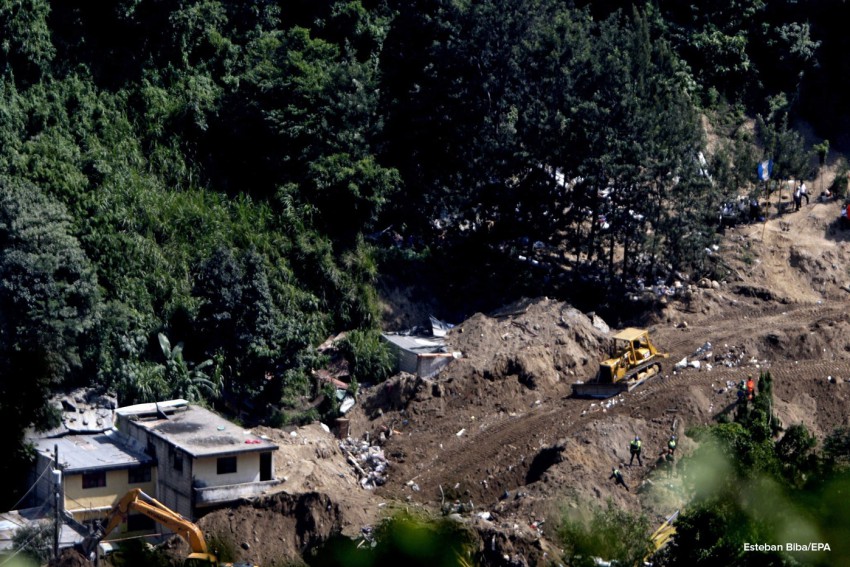On Thursday, October 1, a devastating landslide impacted the village of Santa Catarina Pinula, Guatemala. The small suburb of Guatemala City has been virtually wiped off the map and is now uninhabitable. Current estimations show that hundreds of people have died or are still missing. As rescue crews continue searching through rubble to find any survivors, many continue to question why such a community was allowed to be built in a vulnerable location. Unfortunately, Guatemala has a history of experiencing deadly landslides as there have been four in the last fifteen years, mainly towards the end of the rainy season.
Guatemala and Central America typically have a wet, rainy season that lasts from the month of May through October. This especially has significant implications in the regions eastern coastal and mountainous locations as onshore winds can spread moisture inland and bring copious amounts of rain. Climatologically speaking, this suggests that heavy rain and flooding is annually an issue. 2015’s rainy season over Guatemala was drier than average as shown in the image. Unusually warm Pacific waters has triggered a weather phenomenon called El Nino. Strong El Nino events can significantly alter global weather patterns from their climatological norms and it currently appears that this might be the reason for the deficit of rain over Central America this rainy season.
What changed prior to the landslide event was a trough, an area of low atmospheric air pressure and cold air aloft, that extended from the central regions of North America and into the Gulf of Mexico. This helped create a boundary that enhanced the flow of the anomalously high tropical pacific moisture back into the region the last few days of September. Reports suggests that persistent drizzle and occasional heavy rains were present the day of, and several days prior to, the landslide as the enhanced moisture plume pushed through Guatemala. Many times the excess moisture can be enhanced over mountainous regions as the wind flow can transport it up the slopes and condense it out as rainfall over the windward regions.
The persistent rainfall and moisture through late September in the mountainous central region of Guatemala likely helped saturate the soil and induce a muddy debris flow that triggered the landslide that caused catastrophic devastation in the village of Santa Catarina Pinula. Fortunately, as the highest axis of tropical moisture called Intertropical Convergence Zone moves south for the season, drier weather should be anticipated in the coming weeks. The lack of rain should help suppress bad memories and calm nerves and stress for communities feeling uneasy or concern after this latest disaster.

